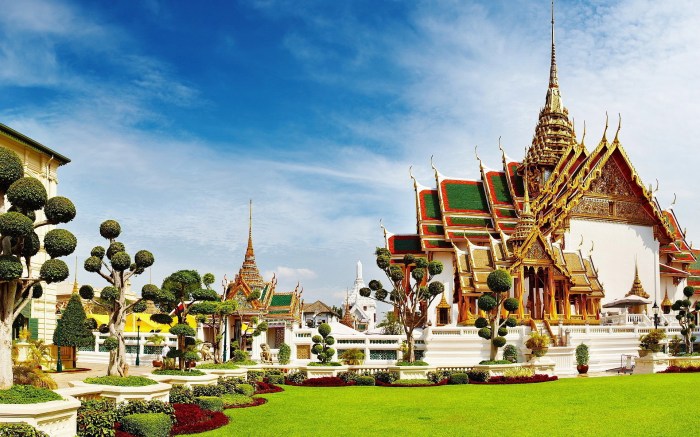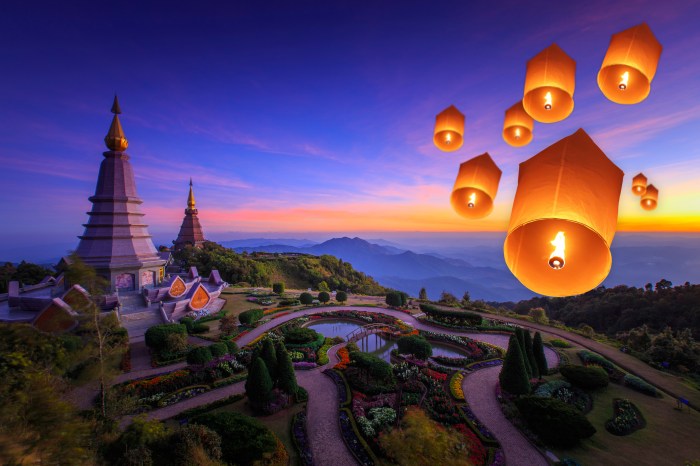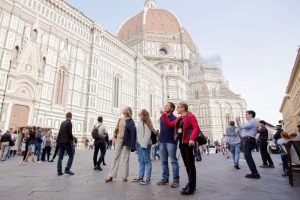
Embark on a journey through the vibrant tapestry of cultures in Asia with Cultural Tours in Asia. From traditional activities to local cuisine, immerse yourself in the essence of each destination for an unforgettable experience.
CULTURAL TOURS

Cultural tours are specialized travel experiences that focus on exploring the unique traditions, heritage, art, and lifestyle of a particular region or community. These tours provide travelers with an in-depth understanding of the local culture, history, and way of life.
One of the key significance of cultural tours is their role in promoting cultural exchange and understanding between different communities and nations. By immersing in the customs, rituals, and practices of a specific culture, travelers gain a deeper appreciation and respect for diversity. This leads to the fostering of mutual respect, tolerance, and empathy among people from different backgrounds.
Comparison with Other Forms of Tourism
When compared to other forms of tourism such as adventure travel or beach holidays, cultural tours offer a more enriching and educational experience. While traditional tourism may focus on leisure activities and relaxation, cultural tours provide travelers with the opportunity to engage with local communities, participate in cultural activities, and gain insights into the historical significance of a place.
POPULAR DESTINATIONS
Asia is a treasure trove of unique cultural experiences, with a myriad of destinations that offer a glimpse into the rich history and heritage of the region. Let’s explore some of the popular cultural tour destinations in Asia and the unique experiences they have to offer.
1. Kyoto, Japan
Known as the cultural heart of Japan, Kyoto is home to ancient temples, traditional tea houses, and beautiful gardens. Visitors can participate in tea ceremonies, witness geisha performances, and explore historic neighborhoods like Gion.
2. Angkor Wat, Cambodia
Angkor Wat is a UNESCO World Heritage site and the largest religious monument in the world. Visitors can marvel at the intricate carvings and architectural grandeur of this ancient temple complex, which was built in the 12th century.
3. Jaipur, India
Jaipur, also known as the Pink City, is famous for its stunning palaces, vibrant markets, and rich Rajasthani culture. Visitors can explore the majestic Amber Fort, shop for colorful textiles and jewelry, and witness traditional folk dances.
4. Seoul, South Korea
Seoul seamlessly combines tradition with modernity, offering a mix of ancient palaces, bustling markets, and futuristic skyscrapers. Visitors can experience traditional Korean cuisine, visit historic sites like Gyeongbokgung Palace, and explore vibrant neighborhoods like Insadong.
5. Luang Prabang, Laos
Luang Prabang is a charming town nestled between the Mekong and Nam Khan rivers, known for its well-preserved French colonial architecture and Buddhist temples. Visitors can participate in almsgiving ceremonies, visit the Kuang Si Waterfalls, and explore the night market for local crafts.
CULTURAL ACTIVITIES
When participating in cultural tours in Asia, tourists have the opportunity to engage in a variety of traditional cultural activities that offer a hands-on experience. These activities not only provide a fun and immersive way to explore the local culture but also help visitors gain a deeper understanding of the customs and traditions of the region.
Traditional Dance Performances
One of the most popular cultural activities during tours in Asia is attending traditional dance performances. These performances showcase the rich history and folklore of the region through intricate movements, colorful costumes, and vibrant music. Tourists can witness the beauty and grace of these dances up close, gaining insight into the stories and traditions they represent.
Cooking Classes
Another engaging activity for tourists is participating in cooking classes where they can learn to prepare traditional dishes from the local cuisine. By getting hands-on experience in the kitchen, visitors not only get to taste authentic flavors but also discover the importance of ingredients, techniques, and cultural influences that shape the culinary heritage of the region.
Art and Craft Workshops
Art and craft workshops offer tourists the chance to unleash their creativity and learn traditional skills from local artisans. Whether it’s pottery making, batik painting, or wood carving, these hands-on experiences allow visitors to appreciate the craftsmanship and artistic traditions that have been passed down through generations. By engaging in these activities, tourists can gain a deeper appreciation for the culture and creativity of the local community.
LOCAL CUISINE
Local cuisine plays a significant role in cultural tours as it provides visitors with a taste of the unique flavors and culinary traditions of a particular region. Food is not only a means of sustenance but also a reflection of the history, values, and lifestyle of the local people. By trying traditional dishes, tourists can gain a deeper understanding of the culture they are exploring.When it comes to traditional dishes that tourists can try during cultural tours in Asia, there is a wide array of options to choose from.
For example, in Japan, visitors can savor sushi, ramen, tempura, and matcha-based desserts. In Thailand, popular dishes include pad thai, green curry, tom yum soup, and mango sticky rice. Each dish has its own unique ingredients and preparation methods that have been passed down through generations, offering a taste of the country’s rich culinary heritage.Food not only satisfies hunger but also serves as a powerful tool for cultural exchange.
Through food, people can connect, share stories, and celebrate traditions. The ingredients used, cooking techniques, and dining etiquette all reflect the cultural identity of a community. For instance, the emphasis on fresh seafood in coastal regions or the use of aromatic spices in South Asian cuisine are all manifestations of the local culture and environment. Overall, local cuisine serves as a gateway to experiencing the soul of a destination and creating lasting memories during cultural tours.
ARTS AND CRAFTS
Arts and crafts play a significant role in cultural tours as they offer a glimpse into the creativity, traditions, and heritage of a particular region. Exploring traditional arts and crafts can provide valuable insights into the history, beliefs, and lifestyle of the local communities.
Types of Traditional Arts and Crafts
- Handicrafts: Tourists can explore a wide range of handmade items such as pottery, textiles, wood carvings, and jewelry. These items often showcase intricate designs and patterns that are unique to the region.
- Performing Arts: Traditional dance forms, music, and theater performances are an integral part of many Asian cultures. Tourists can witness these art forms during cultural events and festivals.
- Painting and Calligraphy: Asian countries are known for their rich tradition of painting and calligraphy. Visitors can observe artists creating beautiful artworks using traditional techniques and materials.
Importance of Preserving Artistic Traditions
Preserving traditional arts and crafts is crucial for maintaining cultural identity and heritage. By supporting local artisans and craftsmen, we can ensure that these age-old traditions are passed down to future generations. Additionally, promoting traditional arts can help boost tourism and contribute to the local economy.
INTERACTIONS WITH LOCAL COMMUNITIES

Interacting with local communities during cultural tours offers a multitude of benefits. Not only does it provide a deeper understanding of the destination’s traditions and way of life, but it also creates meaningful connections between tourists and locals. These interactions often lead to unique experiences that contribute to a richer cultural immersion.
Meaningful Interactions
One example of a meaningful interaction between tourists and locals is participating in a traditional dance or music performance. By joining in or watching these cultural activities, tourists not only appreciate the art form but also engage with the local community on a personal level. This shared experience helps bridge cultural gaps and fosters mutual respect and understanding.
Enriching Cultural Experience
Interacting with local communities plays a crucial role in enhancing the overall cultural experience for tourists. Whether it’s learning a traditional craft from a local artisan, sharing a meal with a family in their home, or simply engaging in conversation with residents, these interactions provide a glimpse into the daily lives and customs of the local people. This firsthand experience helps visitors appreciate the heritage and values of the community they are visiting, creating lasting memories and a more profound connection to the destination.
SUSTAINABLE TOURISM
Practicing sustainable tourism in cultural tours is crucial to ensure the preservation of cultural heritage, protect the environment, and support local communities. By incorporating sustainable practices, we can minimize negative impacts on the destinations we visit and contribute to their long-term sustainability.
Examples of Sustainable Practices in Cultural Tourism
- Supporting local communities by staying in locally-owned accommodations, eating at local restaurants, and purchasing souvenirs from local artisans.
- Minimizing waste by using reusable water bottles, avoiding single-use plastics, and participating in eco-friendly tours that prioritize conservation.
- Respecting cultural traditions and customs by following guidelines set by local authorities and engaging in activities that are culturally appropriate.
- Offsetting carbon footprint by choosing eco-friendly transportation options, such as walking, cycling, or using public transportation whenever possible.
How Responsible Tourism Can Help Preserve Cultural Heritage
Responsible tourism plays a vital role in preserving cultural heritage by promoting sustainable practices that respect and protect the traditions, history, and environment of the destinations we visit. By engaging in responsible tourism, we can help ensure that future generations can continue to experience and appreciate the rich cultural diversity of our world.
As we conclude our exploration of Cultural Tours in Asia, we invite you to delve deeper into the diverse traditions and rich history that make each destination unique. Uncover the beauty of cultural exchange and meaningful interactions with local communities, creating lasting memories along the way.
FAQ Compilation
What are some unique cultural experiences offered by popular destinations in Asia?
Each destination offers something special, such as tea ceremonies in Japan, batik painting in Indonesia, and temple visits in Thailand.
How does local cuisine play a role in cultural tours?
Local cuisine not only tantalizes taste buds but also provides insights into cultural identity, reflecting traditions and history.
Why is it important to interact with local communities during cultural tours?
Interacting with locals enhances cultural understanding, fosters connections, and adds depth to the overall travel experience.





